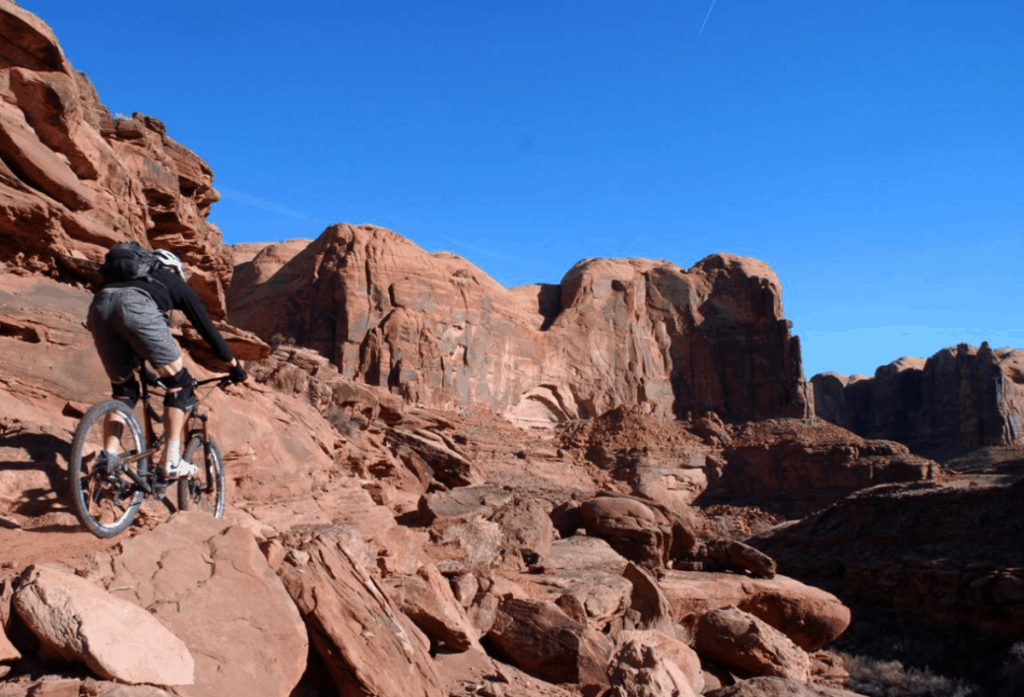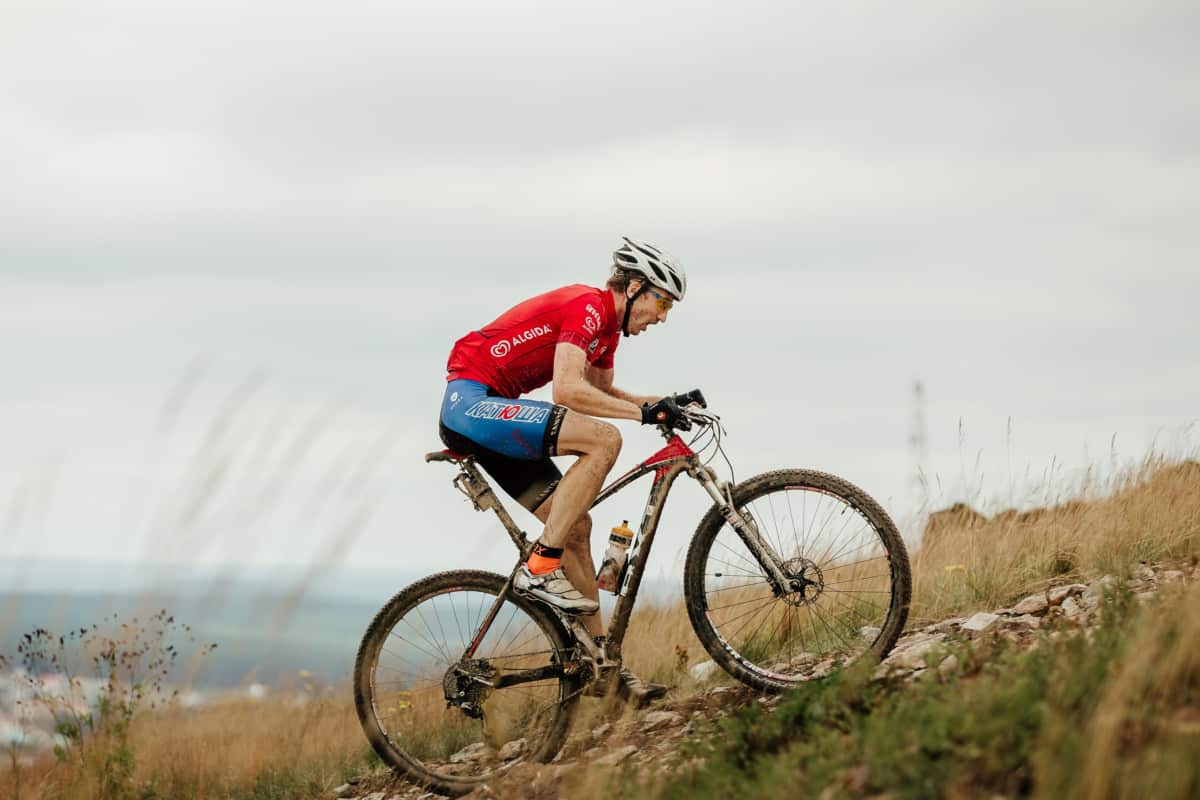When I was doing some research on the most challenging mountain biking trails in my area, I noticed that the total elevation levels were thousands of feet high. Curious to find out what the limitations were, I decided to do some research of my own to find out how steep a mountain bike can climb.
How steep can a mountain bike climb? When it comes to how steep a mountain bike can climb, there is no actual limit to the elevation levels that you can scale on the bike itself. Instead, this will depend only on your own skills. By following a few tips and tricks, you will be able to climb as high as you would like with your mountain bike.
Mountain biking is a rigorous activity that involves scaling high altitudes and making sharp turns and jumps. So, when it comes to climbing up the side of a mountain, how far can you really go behind the handlebars of a mountain bike?
In this article, we will be going over everything you need to know about how steep a mountain bike can climb. Keep reading to find out some valuable skills, components, and even some steep trails that will test your climbing abilities in North America.
5 Skills To Make You A Better Climber On Your MTB Bike
When it comes to scaling steep trails and reaching the maximum levels of elevation on your mountain bike, there are a few things that you can do in order to push your bike to the limit and climb as high as you possibly can.
More specifically, there are 5 main skills that you should develop before your mountain biking journey that will prepare you for the climb. By applying the skills that you have learned and practiced in your free time, you will have the best chances of climbing to the top of any peak.
In this section, we will be outlining these basic skills that should be obtained and used for the best climbing results. Take a look at the list down below for an overview of how you can become a better climber on your mountain bike, and keep reading for a more in-depth description of each one.
Mountain Bike Climbing Skills
- Move forward on the saddle while climbing
- Keep your chest down
- Maintain a slow pedal cadence
- Utilize the proper wheelie technique
- Unweight the rear wheel
The first thing that you should keep in mind when climbing on a mountain bike is to move forward on your saddle during the uphill journey. This is increasingly important, because when you shift your body weight toward the front of the moving bike, it will provide more power as you are going forward.
If you fail to master this technique, especially in the middle of a steep uphill climb, you are more likely to be pulled backward during the ride, completing somewhat of an accidental wheelie. In other words, all of your weight will be on the back wheel, causing the front to automatically lift unexpectedly.
When you are trying to climb uphill with your mountain bike, you should generally be focused on where you would like to go, moving your body accordingly. So, if you are riding uphill, shift all of your weight and focus in the same direction that you are going for that extra push.
Next, you will need to keep your chest down during the climb. While this is not a topic that is generally discussed when it comes to the proper mountain biking form, it does not make it any less important than shifting your weight forward while you are riding uphill.
As previously mentioned, the front wheel is very likely to become elevated while you are climbing if the weight is not correctly shifted. Along with moving your body forward, you should also be putting your chest down toward the handlebars.
This will provide you with an additional assurance that your front wheel will not pop off the trail while you are in the middle of your ride. In addition to preventing an accident wheelie, this will help you to keep your balance while you are peddling.
When you are traveling through an uphill climb, you will actually want to slow your pedal cadence instead of speeding it up, contrary to what your instincts might tell you to do in this situation.
By slowing down the pedal cadence, you will be accelerating the speed of the bike, helping you to complete those tough climbs. When it comes to mountain biking at high elevations, consistent levels of acceleration are key, especially in relation to the upcoming steps.
Along with practicing your technique and finding a steady pedaling rhythm during your mountain bike climb, you must also utilize the proper technique for wheelies. When you are trying to attempt this technique, you might think to pull up on the bars to lift the front wheel.
However, this is not proper form, and can actually throw off your balance significantly. In order to correctly execute a wheelie, you will accelerate your mountain bike in a forward direction, creating a smooth transition of the lifted front wheel.
Lastly, you will need to unweight the rear wheel in order to become a better mountain bike climber. In other words, you will lift up the back wheel while you are climbing, similar to the concept of popping a wheelie in the front.
The process of unweighting the rear wheel is relatively simple, and is not too much different from what you are practicing with the opposite wheel. To do this, you will just shift your weight forward as you are accelerating, allowing the back wheel to elevate as you place your chest downward toward the handlebars.
5 Components That Will Help You Climb Better
Along with learning and practicing the mountain biking skills that were outlined in the previous section, there are a few components that will help you to achieve higher climbs on your bike.
The 5 components in this section are essential before you can expect to scale trails of high elevations. Take a look at the list down below for a general idea of what you should be checking on before you head out.
Components For Better Mountain Bike Climbing:
- Clean bike
- Well oiled parts
- Lowered front end
- Correct saddle height
- Pedal tension
First and foremost, you will need to consistently keep your mountain bike clean. If you neglect to maintain the outside of the bike, the inner components will reflect this carelessness.
In order to avoid anything becoming dirty, broken, rusty, or needing replacement sooner than it should, make sure that you are always cleaning your bike before and after every ride.
Next, all of the parts of your bike should be well-oiled at all times. Aside from just cleaning your bike, you will need to apply lubricant to the chain to keep everything running smoothly.
If your chain is not oiled, it will be more likely to get stuck and consequently make your mountain bike move slower, especially when you are trying to climb steep trails.
Additionally, you should make sure that the front end of your bike is lowered before you try to make the climb. This will improve the aerodynamics of the bike, helping it to move through the trail faster than ever.
The height adjustment of your saddle should be properly fitted to you, not only for comfort, but also for speed. If you are not in a comfortable position where you can practice the proper form, you will not be able to pedal as fast as you normally would.
The final component of your mountain bike that should be adjusted before riding in your pedal tension. Check this to make sure that the tension of the springs is strong enough to hold your cleats while also easing some of the pressure on your legs and ankles.
4 Super Steep Trails To Test Your Climbing Abilities In North America
Now that you have learned everything you need to know about preparing for steep climbs on your mountain bike as well as how you can improve your own skills in order to do so, you might be wondering where you can go to challenge your abilities.
Take a look at the list below to get a head start on your research for some of the steepest trails in North America.

4 Super Steep Mountain Biking Trails (North America):
- Farlow Gap – Pisgah Forest, North Carolina
- Portal Trail – Moab, Utah
- Dakota Ridge Trail – Denver, Colorado
- Bootleg Canyon – Boulder City, Nevada
These mountain biking trails, scattered all throughout the country, are considered to be some of the most difficult and challenging pathways for even the most experienced mountain bikers.
As you can see, there are virtually no limits to the lengths that you can scale when you are behind the wheel of your mountain bike. By practicing all of the skills and making a habit to check the necessary components before your ride, you will be able to climb even the highest mountains with your newfound expertise.

